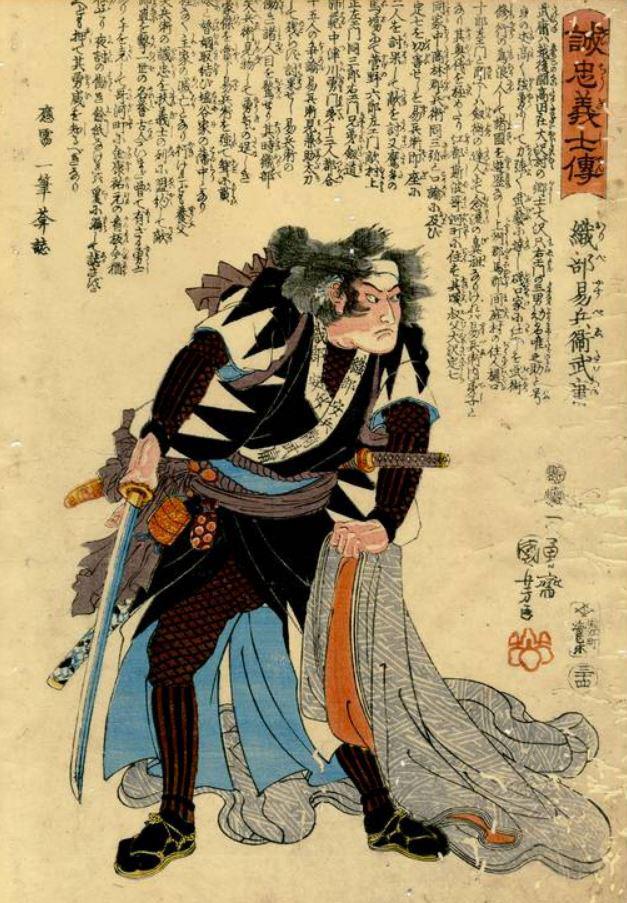Arrived & Now Sold A Singularly Fine 17th Century Asano Clan Wakazashi Signed Bizen no Kami Ujifusa Mounted in Its Bespoke Shira Saya. The Asano Were The Famed & Historical Clan of the 47 Ronin Fame
The blade is superb with a beautiful hamon. Signed Bizen no kami Ujifusa, he was the son of Hida no kami Ujifusa
and was the second generation Ujifusa.
This stunning blade was created a few decades before, and thus used, by a samurai retainer of rank, during the time of the world famous Asano clan’s 47 Ronin, and their revenge taken against their master’s enemy, who had enforced his ritual seppuku. It is just possible this sword might have been used by one of the Asano samurai that became one of their legendary Ronin, and one of the great heroes of loyalty and honour representing the most notable and famous warriors of samurai history
The 'taka no ha' hawkfeather mon, upon the silver habaki, is of Asano Naganori, who was the daimyo of the Ako Domain in Japan (1675 - 1701). His title was Takumi no Kami. He is known as the person who triggered a series of incidents retold in a story known as Chushingura, or the 47 Ronin, one of the favourite themes of kabuki, joruri, and Japanese books and films. Described by Japanese historians as a "National Legend", the revenge of the 47 Ronin took place in Japan and is the ultimate expression of the samurai code of honour, Bushido.
The story began on April 21st, 1701, when lord Asano Naganori, the Daimyo of the Ako Domain was forced to commit ritual suicide for attacking Kira Yoshinaka, a rude and arrogant Master of Ceremony under the Tokugawa Shogunate.
The loyal 47 Ronin took over a year to planned their raid on Kira's mansion. On a snowy December night, they strike on Kira's home, taking everyone by surprise.
After killing Kira, they went to their Master's Grave and turned themselves into the authorities. For committing such a vendetta, the 47 Ronin were requested by the Shogun to commit seppuku, ritual self-disembowelment, in honour of their lord, they willingly complied.
On the day of Asano Naganori's death, he had drawn his sword and attempted to kill Kira, in the Corridor of the Pines at Edo Castle in what is now Tokyo. He was wounded and failed to kill Kira. This resulted, on the same day, in the ultimate penalty, the fifth Tokugawa shogun, Tsunayoshi, sentenced him to commit seppuku, ritual suicide which he did after writing this death poem:
"kaze sasofu hana yori mo
naho ware ha mata
haru no nagori wo
ika ni yatosen."
"More than the cherry blossoms,
Inviting a wind to blow them away,
I am wondering what to do,
With the remaining springtime."
He was buried in the graveyard of Sengaku-ji.
His retainers became ronin when the Shogunate confiscated his fief. Under the leadership of Oishi Kuranosuke, however, they avenged the death of their lord by killing Kira at his mansion in Edo on December 15, 1702. These former retainers became famous as the Forty-seven Ronin, and their vendetta ranks as one of the most renowned in Japan. Print in the gallery of Ukiyo-e depicting the assault of Asano Naganori on Kira Yoshinaka in the Matsu no Oroka of Edo Castle.
Woodblock Print was created of
Oribe Yasubei Taketsune, from the series ‘Stories of the True Loyalty of the Faithful Samurai’ (Seichû gishi den)
by Utagawa Kuniyoshi (1797-1861)
Oribe Yasubei Taketsune (堀部 安兵衛 武庸, 1670–March 20, 1703) was a warrior in Japan. Yasubei was born to Nakayama Yajiemon (中山 弥次右衛門), a samurai of the Shibata Domain (a han in present-day Niigata Prefecture) . When Yasubei was 13, his father lost his position and became a rōnin. Soon afterwards, Yajiemon died, and as Yasubei's mother had died shortly after giving birth to him, Yasubei was thus orphaned. Eventually, Yasubei ended up in Edo and became successful as a master swordsman at the dōjō.
In 1694, Yasubei came to the aid of his dōjō mate, and pledged uncle, in a duel at Takadanobaba in Edo, killing three opponents. He received acclaim for his role, and Horibe Yahei of the Akō Domain asked Yasubei to marry his daughter and become the heir to Yahei's family. Yahei was so impressed with Yasubei that he pleaded to his liege, Asano Naganori, to allow Yasubei to keep his Nakayama surname while marrying into the Horibe family. Yasubei eventually took on the Horibe surname and became a successful retainer of the Akō Domain.
In 1701, Asano Naganori was sentenced to commit seppuku as a result of an attack on Kira Yoshinaka. The Akō Domain was disbanded, and Yasubei once again became a rōnin. In 1702, Yasubei and Yahei were among the Forty-seven Rōnin who attacked and killed Kira, avenging their late lord's death. Yasubei surrendered to the authorities and was placed in the custody of Matsudaira Oki no Kami Sadanao. On March 20, 1703 (according to the Gregorian calendar), he was sentenced to commit seppuku.
The blade is mounted in a superb handmade museum grade display and storage case called a shirasaya, it has an excellent silver Asano clan habaki, and a stunning hamon to the signed flawless blade, but with just light, surface aged, cleaning marks.
There is certainly no way to prove that this fine sword might have been used by such as Yasubei, but its potential to be so, is certainly intriguing
Code: 25530


